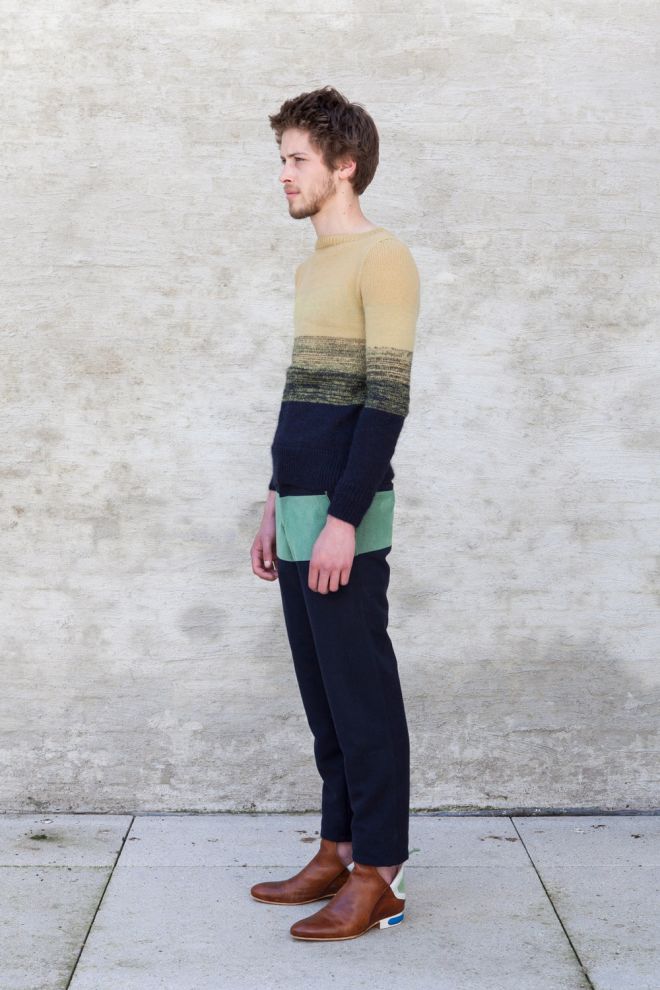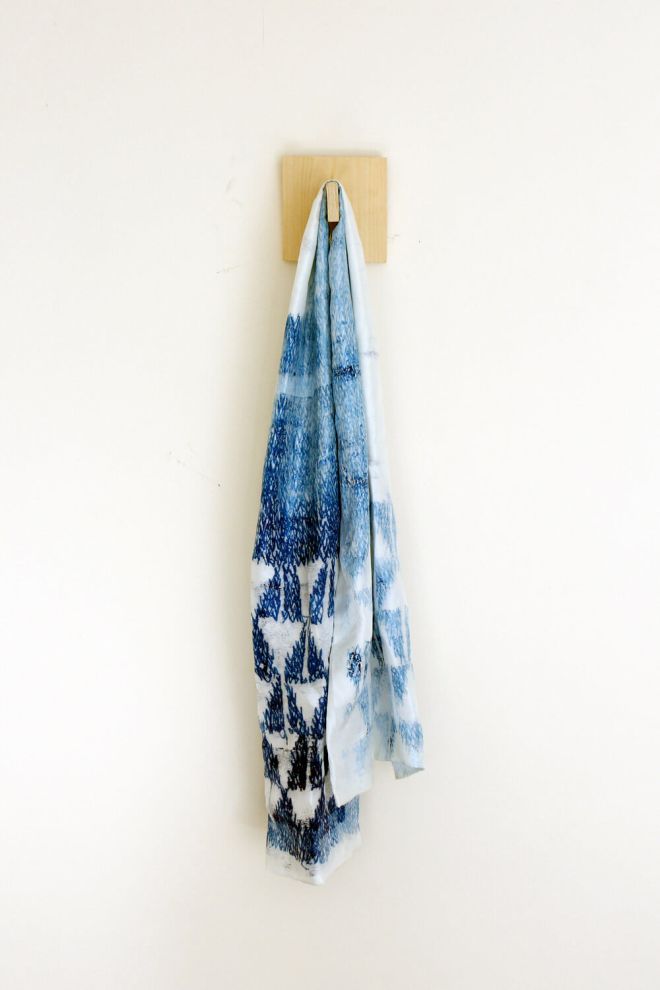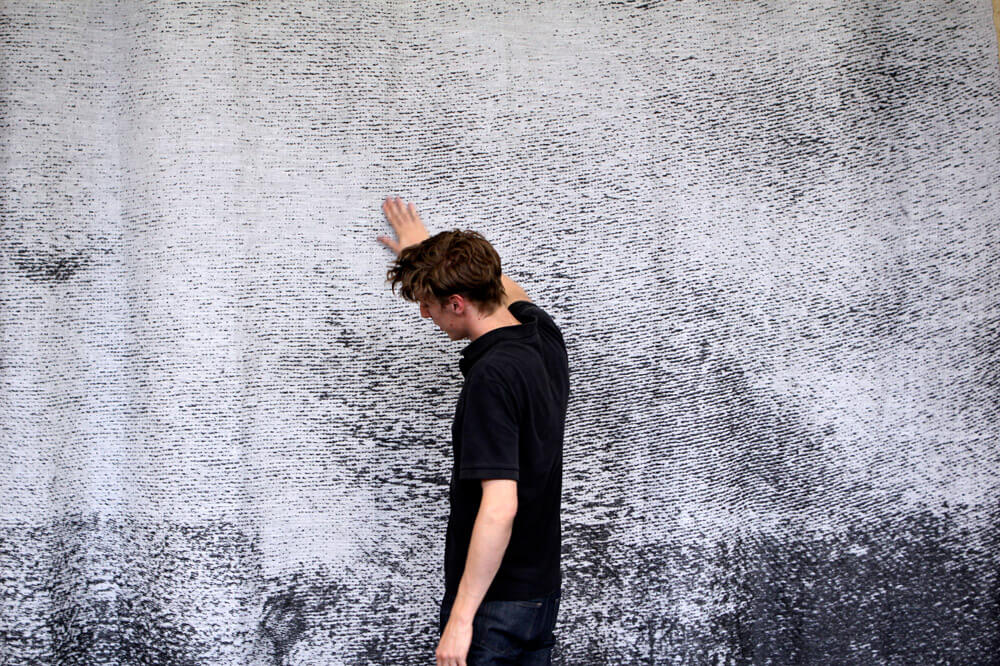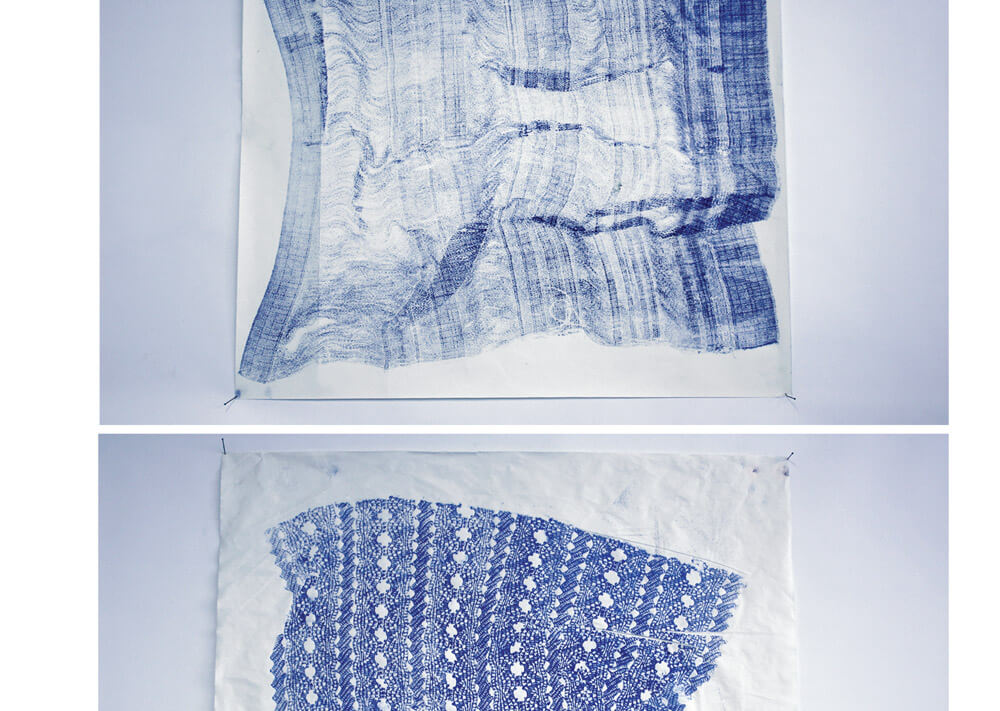Belgian textile designer Laure Van Brempt combines personal projects with work for, among others, fashion designer Christian Wijnants.
I grew up happy and carefree in a small town near Antwerp. My parents are both creative people with regular jobs. They were always behind me. My mom is a nurse, my dad works as a mechanic. It took me a while to figure out what I wanted to do. I studied humanities in high school because I was interested in sociology and cultural science. But I always knew that, ultimately, I would be doing something creative. I just wanted to try other things first. I had always drawn, and after finishing high school I decided to study illustration in Antwerp, at Sint Lucas. I didn’t know if I had a real talent for it. I just wanted to draw.
I only became interested in textile design during my last year at Sint Lucas. Looking back, I was always more interested in colour and composition than in storytelling. I decided to follow the textile design programme at Sint Lucas Ghent, a two-year-course, which is very short. Textile design is an extremely technical craft. You can’t possibly master each and every aspect in two years.
I interned with Hilde Frunt, who owns a knitting studio in Antwerp. She works for numerous Belgian designers. I followed this with an internship at Christian Wijnants, which led to a regular job. Hilde was a wonderful teacher. She lets you knit all day long and you’re allowed to follow your own pace. If it takes you a day to finish just one piece, then so be it. You are given the freedom to dabble.
As for Christian, you have a small team working on a brand that is growing fast, which means that you get a lot of responsibilities. In my case, that meant not just having to knit, but also to follow up production, or to develop prints.
Were you always interested in fashion?
I was. I never expected to work in fashion, however, as I always looked at it with a fair amount of scepticism. Fashion is a fast sector and when you are devoted to craft techniques, you just know that it is important to have a lot of time.
I was convinced that fashion wouldn’t allow for that, but with Christian I learned otherwise. He showed me that it is possible to experiment in fashion. He isn’t scared of doing research. The collection that won him the International Woolmark Prize, last year, was extremely elaborate. Every piece was knitted by hand, dyed by hand.
What inspires you?
As a textile designer, you find inspiration in almost anything. I look at colour, texture, and surface in movies and paintings. Travelling inspires me. Looking at things, compositions and combinations, I remember reading about the Wiener Werkstätte, the Arts & Craft movement in the UK, Bauhaus: the idea of the gesamtkunstwerk, with textiles as part of a bigger whole, inspired me a lot. That is exactly what I want to do. To give my work a place in a larger project, and to consider who I am making something for. More specifically, I’m inspired by textile designers such as Sonia Delaunay, Diane Steverlinck and Gunta Stolz.
You combine contemporary techniques and traditional craft in your personal work.
You should know that there are several ways of making textiles. You can knit and you can weave. Both are traditional crafts and both have a technical basis. If you look at it closely, a weave is all about pixels. Knitting is mathematical. You need to calculate everything, and I enjoy that. I find it fascinating that you can make these really soft textures using your hard technical background. It’s impossible to do everything by hand. I once tried to translate a handmade design into something that could be manufactured industrially, and that didn’t work. You lose the imperfections, the irregularities that make handwork so beautiful. Industrial textile is perfect, there is no room for chance.
Tell us about a few of your projects.
I recently developed a bag for a friend. I made a hand weave and translated that to an industrial weave. I used two threads, one in wool, which easily absorbs paint, and one in polyester, which doesn’t. My weave was white on white, so you couldn’t really distinguish a pattern. We then dip-dyed the bags, which resulted in visible patterns. Since it’s impossible to control that process, each bag was different.
I designed a curtain for the artist Rinus Van de Velde. For this project, I looked not only at the space the curtain would be hung in but also at the individual I was working for. I like to give myself some limitations and to do something within those constraints. The curtain was huge, 3 meters by 3, and I made one huge drawing instead of the usual repetitive design. Rinus often works with charcoal. He commissioned a lightly coloured piece, which of course would become dirty very quickly in the surroundings of an artist’s studio. That’s why I opted for black and white. The curtain has hung in his space for about a year and a half, and you can notice how Rinus has lived with it, how he has touched it and pushed it aside. The curtain changes and it becomes increasingly more like Rinus.”
Do you enjoy collaborating?
Yes, because they keep you sharper. On edge. I can’t really imagine myself working alone at home. Collaborating is not necessarily easier, rather the opposite, but at the very least it challenges you. Of course, you need to take a good look at whom you will be working with. What do they want? What are the limits? As I said earlier, playing within your limits, touching them, is what makes a project more interesting. For instance, the fact that my curtain for Rinus is decidedly black and white, whereas I usually prefer to work with colour.
Would you say that there is a Belgian approach to textile design? A Belgian style?
I often visit the Dutch Textile Museum. One day I had an interesting conversation there with someone who had the opinion that Belgians tended to be rather subtle and have our feet on the ground, and that these characteristics reflected in our design. We like to be innovative. We have ideas, but we also like to keep things pure and simple. Of course, that is a generalisation. It is not valid for everyone, but there is some truth in this person’s observation. “Belgian design has a certain simplicity, yet it is highly original within the constraints of that simplicity.”
How do you see your future?
I need more experience and I want to keep learning. I will soon continue my work for Christian Wijnants on a freelance basis and take on other work. I think I need that. I like to combine personal work and collaborations. It won’t be easy, but I know it’s possible from looking at other people who have succeeded, although they often combine creative work with a teaching job. Currently, I’m working on another large curtain, for Tinsel, a bar in Antwerp. I am collaborating on a knitwear project with a student at the Antwerp Academy and doing production work for a local children’s brand.




